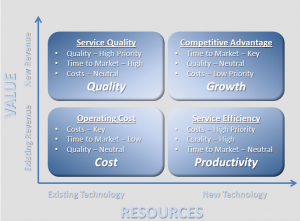I had the fantastic opportunity to participate in a live Cloud discussion: Get off my Cloud: Floating the Risks of Big Data Storage on Huff Post Live during their inaugural week of going live with streaming news and discussions leveraging Google+ Hangouts to bring in live guests. This Cloud and technology thing might be catching on. A longstanding benefit of being a virtual worker is working in very casual wear not likely suitable for even the most casual of offices. After last week, I’m rethinking my morning routine and understanding how the home office is an extension of the overall virtual office after participating in and being live at a moments notice in a Google Hangout, or a Skype session, etc. with a webcam bringing us all together as if in the office. Oh, it’s a small world.
The host, Alyona Minkovski [ @AlyonaMink ], orchestrated a discussion with a live guest in the studio, John Villasenor, (Los Angeles, CA) [ @JohndVillasenor ] Professor of UCLA, and 2 of us via Google Hangouts, myself and John Warren (Seattle , WA). We bantered just 2 of the points to consider when seeking to leverage Cloud based services. The first was the privacy of data and who should control or  define guidelines. Of course we all like to believe the service providers offer a level of security to the data that we share, but the onus of the security of your data is really on you the individual consumer or the business contracting the services. As a business, you can safe guard to some degree with contracts and defined services and service levels regarding security and penalties for breaches, however, the more risk and more scrutiny to customize the service forced upon the service provider, the higher the cost of the service. This is why I speak of categorizing your services. The commodity is the low hanging fruit to take advantage of external service providers.
define guidelines. Of course we all like to believe the service providers offer a level of security to the data that we share, but the onus of the security of your data is really on you the individual consumer or the business contracting the services. As a business, you can safe guard to some degree with contracts and defined services and service levels regarding security and penalties for breaches, however, the more risk and more scrutiny to customize the service forced upon the service provider, the higher the cost of the service. This is why I speak of categorizing your services. The commodity is the low hanging fruit to take advantage of external service providers.
Another twist to this is law enforcement and how much should they have access to via a subpeona. If your computer and records were in your home, they would subpeona access to the data to solve a crime, thus there is the ability to subpeona the service provider to hand over data – Check out the new Australian law @NetIQ tweeted on earlier this week. The twist is how much can they request and how much will the service provider hand over. Certainly the service provider isn’t going to take the time on a request that is too wide and narrow down the data before handing it over. Again, the onus resides on the individual consumer and business to understand this and make the decisions of what they choose to externalize. There are pros and cons to both sides of this debate. There is a lot of hype about law enforcement monitoring transmissions and privacy, but the flip side to that debate is someone who has been stalked and taken advantage of by a predator. We would expect that all the evidence should be examined. This is one of those topics where I tread lightly; not going too deep on, like politics and religion. So I keep advice simple, turn off your GPS, location services on your phone, your Bluetooth and stay unplugged from the internet from a data perspective if you want to insure privacy, but you’ll also lose many capabilities that have enhanced our lives.
Another piece of the conversation touched upon availability of services, especially when your business depends upon those services. Again, categorizing your services to best understand what is the most important and therefore requiring an investment in higher levels of service is your road-map to success. The challenge today is that business has hit a boiling point with their internal IT departments at a time when the competition [Cloud Providers] is exploding, providing simple buying options and the business is making the purchases and growing the New IT within the business, without the IT department. The first challenge is that they have treated all services as if they were created equal with their in-house staff, not enabling them to create standards and different levels of service. However, now the providers will impose standards and their standard terms to gain the economies of scale of shared services. This is a good thing as all things ebb and flow and just as the pendulum swings to the side of the Cloud Providers currently, it with come back to a level state when costs escalate without controls in place. The second challenge is that the business doesn’t know what they don’t know regarding best practices for Disaster Recovery, redundancy and fail over to other providers, different geographies, etc. Read more in this previous post on Cloud Availability where I discuss this topic more fully. The point is the business is making emotional choices without the expertise to deploy these flexible options with the proper controls allowing them to reap the greatest reward from the technology.
The Transformation of IT is being driven largely in part by the cloud service providers and the options that are available today that were not available just a couple of years ago and what is old is new again, management of the technology to derive the greatest benefits.



